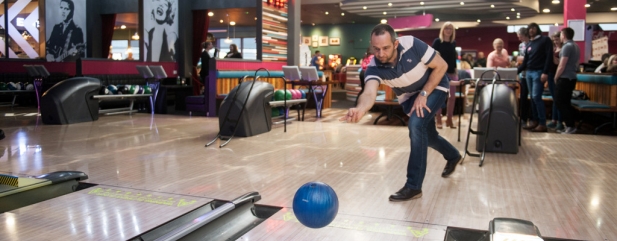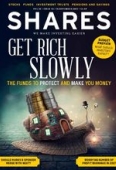Archived article
Please note that tax, investment, pension and ISA rules can change and the information and any views contained in this article may now be inaccurate.
Why Hollywood Bowl has the right credentials to thrive

Bowling is a more robust industry than you might imagine. Market demand is growing at approximately 6% per year even though there is no supply growth, according to stockbroker Peel Hunt. It is an affordable leisure treat, meaning consumers continue to bowl even in tougher economic conditions.
While we have previously expressed a preference for the cinema industry as the most robust part of the leisure sector, a closer look at Hollywood Bowl (BOWL) leads us to conclude that bowling is also attractive from an investment perspective if you back the right operator.
Hollywood Bowl is the UK market leader. It has grown revenue at a 15% compound annual growth rate and has almost trebled its EBITDA (earnings before interest, tax, depreciation and amortisation) since 2013, according to investment bank Berenberg. That’s been achieved through investment in sites and technology.
Just under half of its estate has yet to be refurbished, leading us to conclude that decent gains could be made from owning the shares over the medium term judging by how previous site upgrades have boosted Hollywood Bowl’s earnings.
Tasty profit growth
The company is forecast by analysts to report £20.6m pre-tax profit when it issues full year results on 11 December. That figure is expected to rise to £22.7m in 2018 and £24.8m in 2019. Investors should also expect a special dividend to be declared in December judging by the company’s remarks at the half year results in May and October’s trading update.
The group is able to self-fund its refurbishment and rollout programme as it is highly cash generative. It had £13.5m net debt as of 31 March and that figure is forecast by analysts to be under £10m as at 30 September 2017, with the potential to be in a net cash position by the end of the 2019 financial year if it doesn’t return cash through a special dividend.
Chief financial officer Laurence Keen says the current cost of refurbishment is between £350,000 and £450,000 per site, undertaking between seven and 10 sites a year. ‘We’re upgrading everything the customer experiences in our centres,
from replacing seating, upgrading the diner and bar areas, to signage, carpets, and so on; all of which is helping drive excellent returns on investment at over 50% in year one.’
Multiple earnings driver
Making the sites smarter is clearly having a positive effect on customers and it isn’t the only way Hollywood Bowl is driving up earnings in a mature industry.
It is having success with VIP lanes where the customer pays an extra £1 to bowl in a roped-off area with big black sofas, coloured pins and bowling balls that look like pool balls.
‘We introduced the VIP lanes as a way to let people upgrade and feel that little bit more special. It’s only an extra £1 but people love it and it is an easy upgrade to make. Each site costs £30,000 to convert and there is an average 24 month payback.
‘Our average rack rate price to bowl is just £6 which is less than rival Ten Entertainment (TEG) which prices its headline bowling at between £7.45 and £7.95 in its mature sites,’ says Keen.
Bowling accounts for a little less than 50% of Hollywood Bowl’s earnings. The rest comes from food and drink (28%) and amusement arcade machines (23%). It has managed to increase the contribution from food from 8% to 10% in the past four years by opening up its kitchens so customers can see fresh food being prepared on a griddle rather than operating a bank of microwaves.
Another driver has been training staff to ask bowlers towards the end of their game if they would like to reserve a place in the diner and have their food ready five minutes after they finish bowling. That’s been a success, says the CFO.
On a broader basis, the company uses various means by which to further drive sales including dynamic pricing which adds up to £1 to the price of bowling when demand is high.
Its scoring system is able to send follow-up emails to customers about their last game and include offers to return. Customers can also use their own shoes when bowling and not have to waste time queuing to change into special bowling shoes. All of which have helped contribute to revenue growth.
Property strategy
Peel Hunt forecasts Hollywood Bowl will add three more sites to its estate over the next two years. The company opens new-build sites as part of retail and leisure developments or it acquires sites from rivals and rebrands them. Its preference is high footfall areas such as shopping centres rather than out-of-town sites.
For example, it recently opened a site in Dagenham that was formally a Namco Funscape centre. ‘The landlord wanted more restaurants on the broader leisure park and thought we’d be a better fit as an accompanying leisure attraction,’ reveals Keen.
Hollywood Bowl is increasingly seeing landlords pay money towards site development because of the importance of leisure to retail. For example, its Southampton Watermark centre cost £2.4m to build, of which £1.1m was paid by the landlord.
Importantly, the company is being very selective with acquiring sites from rivals. It only wants locations with the capability to provide superior return on investment and be able to survive a market downturn.
Keen says, as a leasehold business it is in a strong position given it has no loss making sites. He credits Hollywood Bowl’s choice of new sites and acquisitions, as well as delivering a great customer experience.
A decline in consumer spending would most likely affect Hollywood Bowl’s amusement arcade income first, he adds. It’s the obvious place where parents or adults would think twice about spending, instead prioritising a game of bowling as the activity lasts much longer.
Thankfully Hollywood Bowl does have a cushion in the form of high profit margins should life become more difficult. Peel Hunt forecasts 19.7% EBIT (earnings before interest and tax) margins in 2018, rising to 19.8% in 2019.
Important information:
These articles are provided by Shares magazine which is published by AJ Bell Media, a part of AJ Bell. Shares is not written by AJ Bell.
Shares is provided for your general information and use and is not a personal recommendation to invest. It is not intended to be relied upon by you in making or not making any investment decisions. The investments referred to in these articles will not be suitable for all investors. If in doubt please seek appropriate independent financial advice.
Investors acting on the information in these articles do so at their own risk and AJ Bell Media and its staff do not accept liability for losses suffered by investors as a result of their investment decisions.
Issue contents
Big News
- Bakkavor’s renewed appetite for IPO
- UK construction in recession
- Can Workspace fight off WeWork’s competitive threat?
- Worrying number of profit warnings in 2017
- IQE cash call gets huge backing
- CityFibre strikes ultra-fast fibre deal with Vodafone
- Insurer opens doors to retail investors with £600m IPO
- Brighter prospects for drugs giant AstraZeneca

 magazine
magazine










